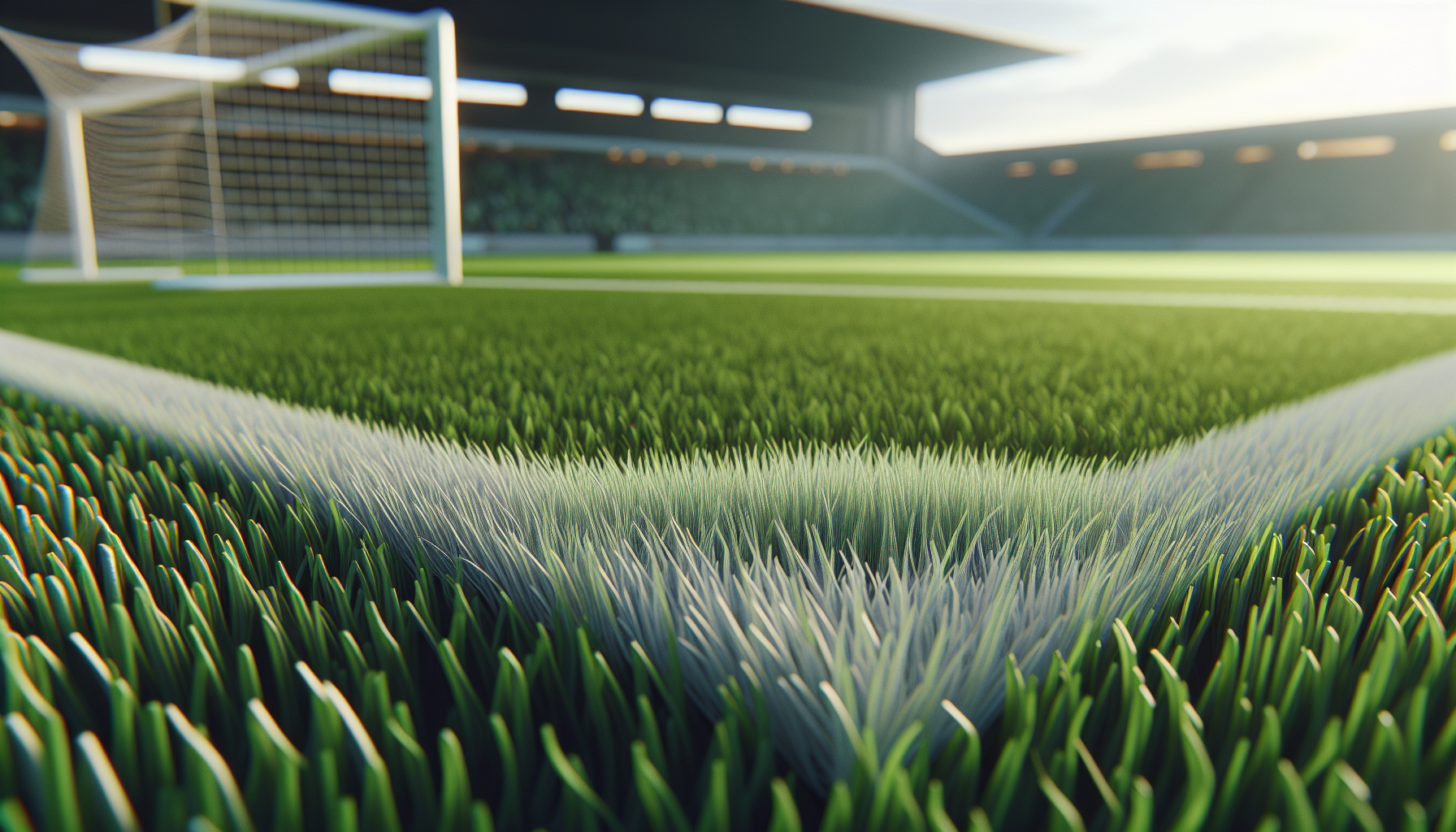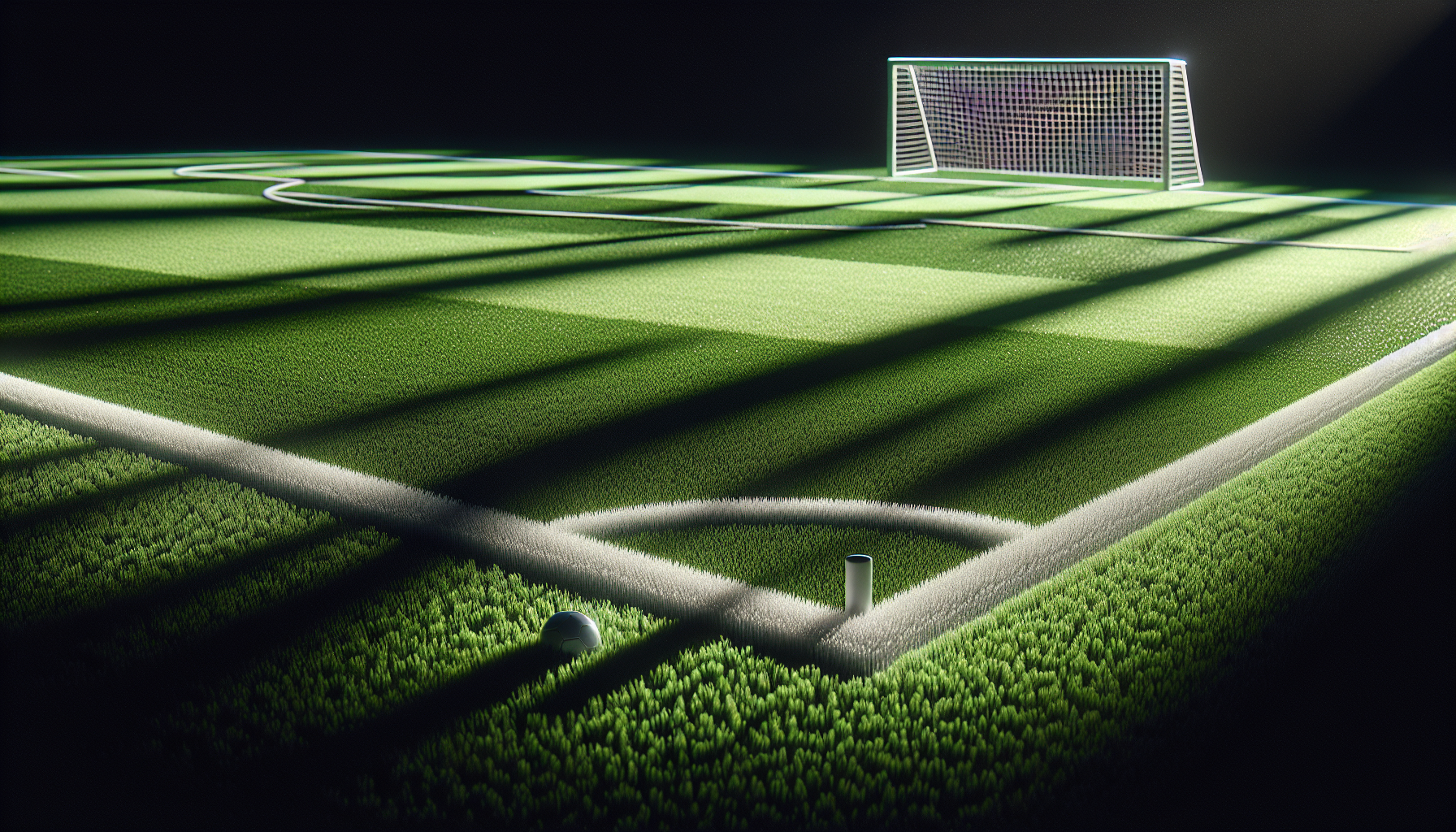
When it comes to maintaining a beautiful lawn, securing your fake grass is crucial. The rise in popularity of artificial turf, also known as synthetic grass or faux grass, has led to increased demand for proper installation and maintenance.
Improperly secured plastic grass can pose risks and suffer damage from wind, rain, and foot traffic.
To ensure a long-lasting and visually appealing lawn, consider factors like the type of materials and tools required for turf installation, the specific needs and characteristics of your lawn, and the weather conditions and geographical factors that may affect securing. Properly installed artificial turf, synthetic grass, faux grass, plastic grass, turf installation, and grass anchoring is crucial for a seamless and long-lasting landscape.
Best Methods for Securing Artificial Turf
When it comes to securing artificial turf, there are several best methods that can ensure its long-lasting performance. One important aspect is choosing the right base for the grass securing artificial turf installation.
This ensures a solid foundation for the grass securing process.
Proper drainage is also crucial to prevent water accumulation and potential damage to the grass fixing turf.
Preparing the base properly further enhances the secure installation of the securing fake lawn.
Using quality adhesive is an effective method for securing fake lawn.
This ensures that the turf stays in place and prevents any shifting or movement. Utilizing seaming techniques for seamless joins further enhances the stability of the grass fastening turf. Securing fake lawn, anchoring artificial turf, and other methods such as grass fastening, grass stabilizing, and grass fixing are essential for maintaining a durable and aesthetically pleasing outdoor space.

Using Anchor Pins to Keep Synthetic Grass in Place
Anchor pins are an essential component for fixing faux grass in place, and they play a crucial role in grass installation methods. These lawn anchoring techniques, such as fixing faux grass, offer effective solutions for securing synthetic turf.
With various turf fastening options available, including plastic grass fixing techniques, anchor pins stand out as one of the most reliable choices.
Made of durable materials like plastic, anchor pins are designed to penetrate the ground and securely hold the synthetic grass in place.
By strategically placing and tightening these anchor pins, you can enhance the overall appearance of your synthetic grass while ensuring its long-term durability. These grass installation methods provide stability, preventing shifting or moving of the synthetic grass, thanks to effective lawn anchoring techniques, turf fastening options, and plastic grass fixing techniques.
Anchor Pins and Grass Installation
- Anchor pins are essential for fixing faux grass in place.
- These lawn anchoring techniques provide effective solutions for securing synthetic turf.
- Anchor pins made of durable materials like plastic are one of the most reliable choices for turf fastening.
- Strategically placing and tightening anchor pins enhances the overall appearance and long-term durability of synthetic grass.
Alternatives to Grass Anchoring for Faux Grass
Securing fake lawn with stakes or anchor pins for synthetic grass is one of the most common fastening methods for plastic grass. These grass securing systems typically involve placing stakes or anchor pins at regular intervals along the edges of the faux grass to keep it in place.
Alternatively, adhesive solutions can also be used for securing fake lawn, with adhesive products specifically designed for this purpose.
These adhesive solutions offer a strong and long-lasting bond, ensuring that the artificial turf stays securely in place.
In addition to the traditional methods mentioned above, there are alternative techniques available for securing faux grass. One such option is the use of interlocking systems. These systems involve interlocking panels or tiles, providing a secure and efficient solution for anchoring fake lawn with stakes, anchor pins, fastening methods, adhesive, or any other grass securing systems or fake grass anchoring products.
Fixing Faux Grass on Different Surfaces
When installing faux grass on various surfaces, it is essential to comprehend the potential challenges that may arise in the process. The longevity and stability of synthetic grass depend on addressing these challenges effectively.
To begin with, proper preparation of the surfaces is essential.
Whether it’s concrete, soil, decking, or asphalt, each surface requires specific cleaning and preparation techniques before installing artificial turf.
When fixing faux grass on concrete surfaces, there are various synthetic grass fixing methods to consider. Adhesive, tape, or nails can be used to secure the artificial turf in place.
Each method has its pros and cons, and their suitability depends on the scenario at hand
| Faux Grass Fixing Methods | Pros | Cons |
|---|---|---|
| Adhesive | Provides strong and secure attachment | May be difficult to remove or adjust |
| Tape | Easy to apply and reposition | May not provide as strong of a hold as adhesive or nails |
| Nails | Offers a permanent and sturdy fixation | May leave visible holes or damage the surface |
Securing Fake Lawn on Slopes
Securing fake lawn on slopes is crucial to ensure a long-lasting and visually appealing installation. Installing fake lawn on slopes can present challenges and potential issues, which is why proper preparation is essential.
Before installing fake lawn on a slope, it is important to assess the gradient and stability of the slope.
Removing any existing vegetation or debris is necessary to create a clean surface for installation.
Addressing drainage issues will help prevent water accumulation and potential damage.
Choosing the right type of base is important for securing fake lawn on slopes.
There are different base options available, each with considerations for stability, dexterity, and longevity. This includes securing faux turf with adhesive or using plastic grass fixing products for added stability. Lawn anchoring materials, such as plastic grass fixing products, are essential for securing faux turf with adhesive, fixing artificial turf on soil, fastening synthetic grass on wood, or securing faux grass on gravel.
Recommended Turf Installation Methods for Patios and Driveways
When it comes to installing turf on patios and driveways, there are several recommended methods that ensure a successful and long-lasting outcome. One important consideration is evaluating the suitability of turf for your specific patio or driveway, as different areas may have different requirements.
Assessing the required maintenance for artificial grass is crucial to understand the level of upkeep needed.
Accurate measurement of the area is also essential for a precise installation.
Preparing the substrate is another crucial step in the installation process. This involves clearing the area of any debris or existing vegetation, as well as leveling the ground to ensure a smooth surface.
Applying a weed barrier can prevent weed growth and maintain the overall appearance of the turf. Securing the turf is a vital aspect that involves using various grass securing techniques for slopes, turf installation methods for patios, grass anchoring solutions for driveways, lawn fastening options for playgrounds, securing fake lawn on rooftops, and anchor pins for plastic grass on decking.
Installing Turf on Patios and Driveways
- Proper evaluation of the suitability of turf for specific areas is important as different patios and driveways may have different requirements.
- Accurate measurement of the area is essential for a precise installation of artificial grass.
- Preparing the substrate by clearing debris and leveling the ground ensures a smooth surface for turf installation.
- Applying a weed barrier helps prevent weed growth and maintains the overall appearance of the turf.
Fastening Options for Securing Fake Grass on Rooftops
Fastening options are essential for securely fastening fake grass on rooftops. Proper installation is essential to ensure a secure foundation and prevent any shifting or movement of the grass.
It also helps maintain the overall aesthetic and functionality of the rooftop area.
When choosing from various fastening methods for artificial grass on balconies, grass securing systems for sports fields, or turf installation tips for golf courses, there are several factors to consider.
These include the type and material of the roof, weather conditions, foot traffic, and installation budget.
Three main fastening options for securing fake grass on rooftops are the adhesive method, anchor systems, and mechanical fasteners.
The adhesive method involves using suitable adhesives for rooftop installations and following the recommended application process and tools. Anchor systems provide stability through various types of anchors, such as fastening methods for artificial grass on balconies, grass securing systems for sports fields, turf installation tips for golf courses, fake grass anchoring products for gardens, securing fake lawn with tape, synthetic grass fixing methods for landscaping.
Using Adhesive or Tape to Fix Synthetic Grass in Pet Areas
Using adhesive or tape to fix synthetic grass in pet areas is an essential step in ensuring its stability and longevity. When securing synthetic grass, proper preparation is crucial.
Clearing the area of any debris and ensuring the surface is even and smooth will create a solid foundation for the grass to adhere to.
Choosing the right adhesive or tape is also important.
Opt for pet-friendly and weather-resistant options to ensure durability and safety for your furry friends. Faux grass securing options for pet areas are available in the market, providing excellent anchoring solutions.
These options can help keep the synthetic grass in place, even when pets are playing or running around.
When applying the adhesive or tape, follow a step-by-step guide to ensure proper installation.
Employing proper application techniques will help guarantee the grass stays securely in place. Based on the words faux grass securing options for pet areas, plastic grass installation methods for rooftops, grass anchoring alternatives for commercial use, turf fastening tools for residential areas, securing fake lawn with screws, anchor pins for synthetic grass on concrete, it is clear that there are numerous options available for securing synthetic grass in various settings.
Securing Synthetic Grass
- Using adhesive or tape is essential for ensuring the stability and longevity of synthetic grass in pet areas.
- Proper preparation, such as clearing the area of debris and ensuring a smooth surface, creates a solid foundation for the grass to adhere to.
- Choosing pet-friendly and weather-resistant adhesive or tape options ensures durability and safety for furry friends.
- Faux grass securing options available in the market provide excellent anchoring solutions, keeping the synthetic grass in place even during pet play or running.
The Purpose of Sand on Artificial Grass
Is Sand Necessary for Artificial Grass
